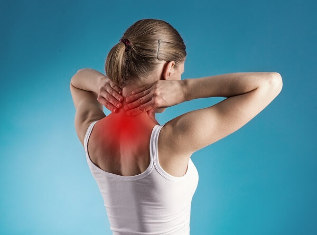
Dystrophic changes in the intervertebral disc are called osteochondrosis. This problem can occur in a person at any age, intervertebral disc dysfunction leads to the development of many serious concomitant problems. The development of cervical osteochondrosis. How to stopWhat medicines and alternative medicine are used in treatment?
Cervical Osteochondrosis - What is it
The cervical spine consists of 7 vertebrae and 8 paired nerve nodes. Osteochondrosis of the cervical spine develops against the background of degeneration of the intervertebral pulp in the vitreous tissue. In this case, pathological changes occur in the nerve fibers and vitalities. Affect the end of the vessels. Most often, pathology affects the 7th and 8th vertebrae.
The disease is carefully disguised as other pathology, manifested by headaches and neck discomfort attacks. Patients may complain of dizziness, nausea, and pressure problems. Most often, the disease is associated with heart andIs confused with blood vessel problems.
Important! Often, against the backdrop of problems with the vertebrae, a person suddenly begins to lose consciousness, lacks air, and the tongue may become numb.
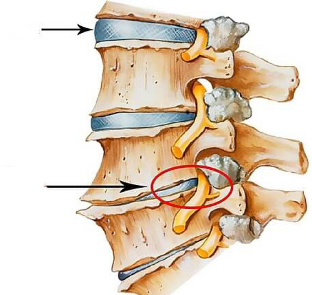
Cervical osteochondrosis is most often diagnosed in people after the age of 30, due to the particularity of the location of the human skeletal, constant statistical and dynamic weight. More recently, osteochondrosis also occurs in adolescents.
due to illness
The development of osteochondrosis is influenced by physiological and pathological processes. They are closely related to each other, in medical practice they are always considered together.
Anatomical changes are due to irreversible age-related processes of the spinal cartilage. They are localized in the central part of the intervertebral disc, manifested as a pinch of pulp by fibrous tissues. Discomfort during irritation of the nerve endingsit occurs.
Pathological changes - In this case, the area of inflammation extends beyond the cartilage tissue, causing severe irritation of the nerve endings, pinching of blood vessels. They arise against the background of improper nutrition, a sedentary life. The style manifests in adolescents and middle-aged people.
Important! In rare cases, osteochondrosis of the cervical spine may disappear on its own, or manifest itself as a short-term episode. The human body has a number of compensatory and protective functions that allow pathological changes in cartilage for some time. Can neutralize.
stimulating factor:
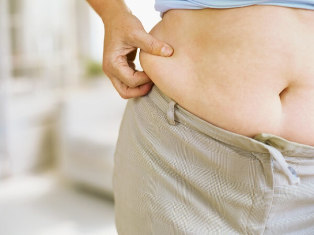
- sedentary work, lack of regular physical activity;
- often forced to be in an uncomfortable position;
- overweight;
- nervous overload, stressful situation;
- neck and occiput injury;
- hypothermia.
Osteochondrosis can cause congenital anomalies, autoimmune diseases.
Key Features
Cervical osteochondrosis does not always manifest with pain in a specific part of the spine, often with a blurred clinical picture in the disease.
The main symptoms are dizziness, migraine, sudden changes in blood pressure.
when immediate hospitalization is required:
- Numbness, loss of mobility of the waist muscles of the face or shoulders;
- increased headache, which is accompanied by a decline in well-being in general;
- lack of coordination;
- loss of consciousness.
Pain in the cervical spine often radiates to the girdle and upper limbs of the shoulder. A distinctive feature is that the pain syndrome is paroxysmal in nature, often followed by sudden movements during waking, laughing, coughing, and sneezing.
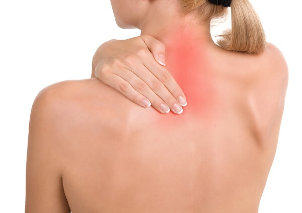
If osteochondrosis is in the early stage, the pain quickly subsides, almost always with a crunch in the neck, muscles weaken, skin loses sensitivity.
Important! In the case of pathological changes in the 6th vertebrae, pain syndrome in the thumb can be seen, in case of damage to the 7th vertebrae, it affects the middle finger.
Symptoms of cervical osteochondrosis appear later in women than in men - the average age is 50–55 years.
how is osteochondrosis associated with other diseases
Cervical osteochondrosis and blood pressure - the association between these pathologies is long established. For osteochondrosis, it is the sharp drop in pressure during the day that is characteristic, persistent hypertension is not inherent in this disease.
Migraine with increased pressure in osteochondrosis, head ache, arms, legs, chest pain. At the same time, skin sensitivity in the collar area decreases significantly, stress can stimulate a pressure rise. , Staying in an uncomfortable position for a long time.
Cervical osteochondrosis and dizziness - occurs against the backdrop of severe pain syndrome, impaired brain circulation and transmission of nerve signals, problems with the vestibular system.
With osteochondrosis, non-systemic dizziness appears most often - there is no feeling of rotating objects, but the person is very ill, it is difficult for him to remain erect.
Important! To exclude the presence of pathological changes in the nasopharynx, with frequent attacks of dizziness, it is necessary to visit not only a neuropathologist, but also an ENT.
Headache occurs in about 90% of cases with osteochondrosis. It occurs against the background of vascular cramps, pinched nerve endings, increased intracranial pressure. It manifests itself in different ways - pulsed, dull.
Headache attacks in osteochondrosis are similar to sensations such as hypertension, angina pectoris, heart attack, stroke.

Panic attacks with osteochondrosis occur on the background of cerebral circulation disorders. At the same time, a person experiences undue fear, physical discomfort. Weeks range from 2-3 minutes to an hour, they areMay be repeated several times a day. Heavy attacks are accompanied by heavy head, frequent tears, feeling of apathy and lethargy. With severe attacks, you need to take a tranquilizer, visit a psychiatrist regularly.
Fear and depression occur with osteochondrosis against the backdrop of constant pain, a forced change in the normal way of life.
Diagnostic Methods
People suffering from osteochondrosis may experience pain in the back of the head, chest, arms - such a blurred picture greatly complicates the initial diagnosis.
Timely diagnosis and uncontrolled intake of painkillers by people. A person feels healthy without pain. Seeking medical help from the body when irreversible processes develop in the tissues of the cervical joints.
Important! Only one neurologist deals with the treatment of osteochondrosis.
External examination is to identify the mobility and sore throat. After that, the doctor prescribes X-rays in multiple projections and computed tomography. If a hernia is suspected, a magnetic resonance imaging scan should be performed. DopplerUltrasound is used to assess the condition of arteries and blood vessels.
Principles of Drug Treatment
The purpose of drug treatment is to eliminate pain, swelling, normal mobility, and circulation.
Main drug group:
- Analgesics in the form of pills and injections are intended to eliminate pain syndrome;
- non-steroidal and steroidal anti-inflammatory drugs;
- Chondroprotectors help restore cartilage tissue;
- Muscles that relax the muscles, are used as adjunct agents to relieve pain - they contain glycerin, benzimidazole, have a large list of contraindications;
- Vitamin complex - must contain all the vitamins of B, D, E, retinol, ascorbic acid;
- Artificial analogs of histamine - help eliminate problems with the vestibular system;
- Gels, for external use as ointments - helps improve blood circulation, relieve cramps and pain, warm up, relieve pain.
Important! The vitamins contained in food are not sufficient to treat osteochondrosis.
Medications that improve cerebral circulation in cervical osteochondrosis are an essential component of therapy, they dilute blood vessels, improve blood flow. Nootropic drugs that improve metabolic processes in the brain, memory and thinkingRestore
Surgery is rarely used for osteochondrosis. An operation is unavoidable for signs of upper extremity paralysis, acute circulatory disorders, and cerebral edema.
Additional treatments include massage, push therapy and manual therapy, dosed traction, relaxation techniques and acupuncture.
how to treat osteochondrosis at home
Home remedies include regular implementation of special exercises, use of specialized orthopedic devices. As an adjunct therapy, you can use traditional medicine recipes.
The shunt collar is designed to eliminate tension in the spine, reduce tension, strengthen neck muscles. The head and neck are fixed in the correct position, allowing you to get rid of insomnia. It prevents the progression of disease changes. You do not need to wear a collar all day, but 2-3 hours before bedtime.
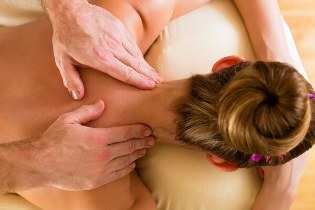
Self-massage will help eliminate pain and cramps, while rubbing ointments that improve blood flow. The procedure should be performed while sitting, the posture is comfortable, relaxed. It's not only the neck. It is necessary to make a stroking, circular rub, rather to touch the waist of the shoulder.
Important! With cervical osteochondrosis, heating of any kind is prohibited, except in baths and saunas.
Healing baths eliminate pain and swelling well, they allow the spine to relax. Water procedures should be done every other day, this course includes 15-20 procedures.
Bath Recipes:
- Brew 150 grams of chamomile and mint, mix 5 liters of boiling water. Leave the infusion for 2 hours, filter.
- Take 20 grams of peppermint, lemon balm and birch leaves. The collection is brewed in 6 liters of boiling water, filtered after 2 hours.
- To prepare the sage infusion, you will need 300 grams of herbs and 5 liters of boiling water. The treatment solution will be ready in 2 hours.
For oral administration, you can prepare an infusion of yarrow - this will help eliminate swelling, cramps, and pain quickly. Brew 6 ml of 6 grams of boiling water in a closed container for one hour. Take 15 ml 3 times a day.
A solution of 15 grams of sea salt and 1 liter of water helps to deal with osteochondrosis. Bring the mixture to a boil, cool completely. In the composition, moisten the natural cloth, apply on the back of the neck.
Possible complications
With timely diagnosis and appropriate treatment, cervical osteochondrosis proceeds without any special complications. Otherwise, severe pathological changes develop that can lead to disability.
Why is cervical osteochondrosis dangerous?
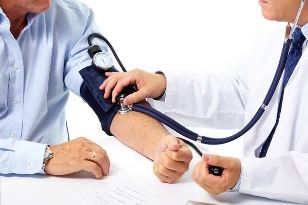
- vertebral artery syndrome - functional and biological changes that are caused by impaired blood circulation in the brain;
- hypertension, arrhythmia;
- numbness, weakness, muscle atrophy of the upper limbs;
- protrusion, hernia;
- VSD;
- neurological disorders.
Physiotherapy practice for osteochondrosis
Exercise therapy for osteochondrosis of the cervical spine is capable of restoring nutrition in damaged tissues, restoring blood circulation.
During therapeutic gymnastics, the head is rotated harder, faster bending is forbidden. Only imitation of such movements is allowed. You can do a set of exercises for more than 2 minutes - from prolonged loadThere may be a complaint of osteochondrosis.
An effective set of exercises for cervical osteochondrosis was developed by Shishon. The theory is that all movements should be performed smoothly, with each position fixed for 15–30 seconds. During gymnastics. There should be no painful sensations, each exercise should be repeated 5 times.
Description of practice:
- Sit up straight, tilt your head to the right. When muscle tension appears, correct the position. Make 5 slopes on each side.
- Tilting the head back and forth is done by analogy with previous practice.
- Keep the chin alternately with the left and right shoulder. The back is straight, you cannot round it.
- Turn left and right of head in every position for 30 seconds.
- Continue doing side turns, but use extra arms. When turning right, the right hand should be on the left shoulder, and vice versa.
- Close your palms, raise your hands above your head, bend to the sides.
- Straighten your arms, move them towards the arms and extend your back slightly.
preventive measures
Prevention of osteochondrosis involves simple steps, serious health problems can be avoided if done regularly. Prevention is essential, especially for the elderly, and those who spend a lot of time sitting.
how to prevent osteochondrosis:

- Take a hot bath for at least 10 minutes every day;
- Visit the bathrooms, saunas regularly to eliminate cramps and throat tightness;
- sleep on an orthopedic pillow and a special mattress;
- Warm up for a short five minutes every hour during sitting.
The best sports for the prevention of osteochondrosis are swimming, yoga, aerobic exercise, special gymnastics to strengthen the cervical muscles.
People at risk are prohibited for running, jumping or bodybuilding. Important weight is 10 kg, weight should be carried on two hands. Additionally, you can use a corset that protects the spine. is.
Sergei Bubnowski describes well the preventive measures for osteochondrosis. In his book, you can find out which back pain is dangerous, how to restore health without injections and corsets, and special exercises. Find a set of
Cervical osteochondrosis is a disease that can affect everyone. Timely diagnosis and prevention, a healthy and active lifestyle will help avoid the development of serious pathological changes in the spine, good health and excellent mood for you. Will give.

















































